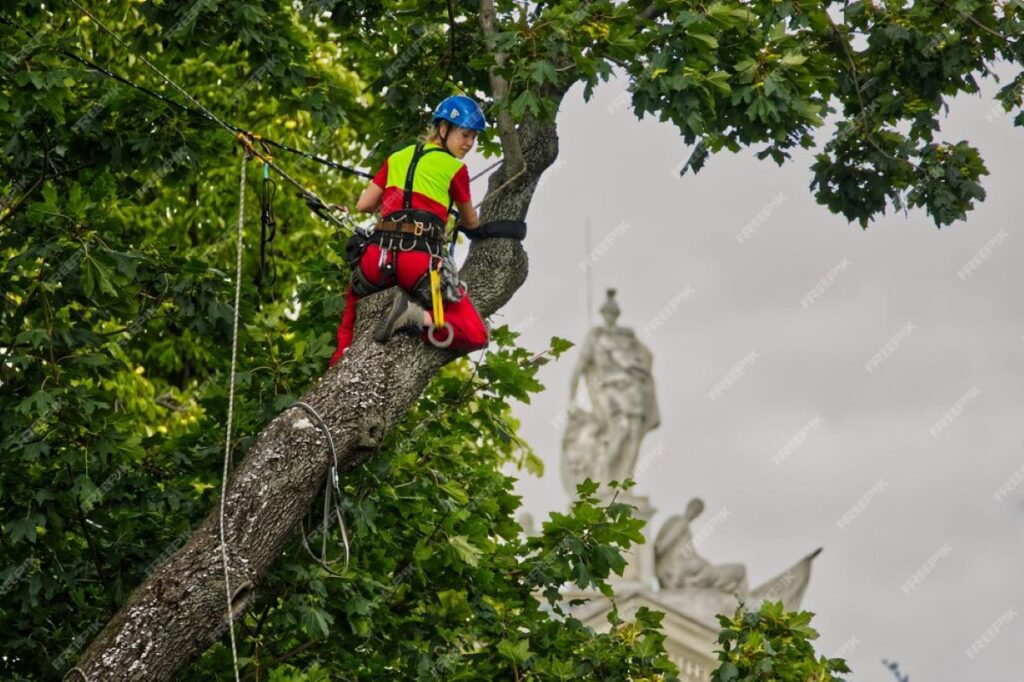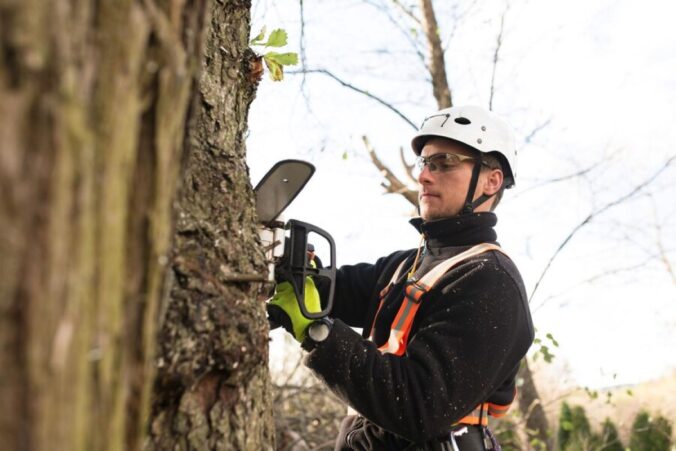In the vibrant landscapes of Sydney, trees play an essential role in maintaining the ecological balance, enhancing the beauty of the environment, and providing shade and shelter. However, when trees become diseased or start to die, the implications can be severe. Tree removal in Sydney is not merely a matter of aesthetics; it is a crucial step in safeguarding the health of the ecosystem, ensuring safety, and maintaining property value. This article explores the importance of tree removal, the risks associated with diseased or dying trees, and the benefits of professional tree removal services.
The Risks of Diseased or Dying Trees
Diseased or dying trees pose a multitude of risks that can affect both the immediate environment and the surrounding community. Understanding these risks is vital for property owners and local residents alike.
Safety Hazards
One of the most pressing concerns regarding diseased or dying trees is safety. As trees deteriorate, they become increasingly unstable, posing a significant risk of falling branches or even complete tree failure. This risk is particularly heightened during storms or high winds, where weakened trees can cause serious damage to property, vehicles, and, most importantly, people.
Moreover, trees that are infested with pests or diseases can become brittle and fragile. The potential for falling limbs can lead to injuries or fatalities, making it imperative to assess the health of trees regularly, especially in residential areas where children and pets play. Additionally, the presence of hazardous trees can lead to increased insurance premiums for homeowners, as insurers may view them as liabilities. Regular inspections and maintenance can mitigate these risks and foster a safer environment for all.
Spread of Disease
Diseased trees can act as a breeding ground for various pests and pathogens, which can spread to healthy trees in the vicinity. For instance, certain fungal infections or insect infestations can quickly propagate, leading to widespread damage in local flora. This not only affects the trees themselves but can also disrupt the local ecosystem, impacting wildlife that relies on healthy trees for habitat and food.
By removing diseased or dying trees promptly, property owners can help to prevent the spread of these diseases, protecting the health of surrounding trees and plants. Furthermore, the loss of trees can lead to a decrease in biodiversity, as many species depend on trees for shelter and sustenance. The interconnectedness of nature means that the decline of one species can have a ripple effect throughout the ecosystem, underscoring the importance of maintaining tree health in our communities.
Impact on Property Value
The presence of diseased or dying trees can significantly diminish the aesthetic appeal of a property. Overgrown, unhealthy trees can deter potential buyers, leading to a decrease in property value. A well-maintained landscape, on the other hand, enhances curb appeal and can increase the overall worth of a home.
Investing in tree removal services not only safeguards the health of the remaining trees but also contributes positively to the property’s marketability. Homeowners are encouraged to view tree removal sydney as a proactive measure in property management. Additionally, the strategic planting of healthy trees can enhance the landscape, providing shade, beauty, and even energy efficiency by reducing cooling costs in the summer. The long-term benefits of maintaining a vibrant and healthy tree population cannot be overstated, as they contribute to both the aesthetic and ecological value of a neighbourhood.
Signs a Tree Needs Removal
Identifying when a tree is beyond saving is crucial for effective management. There are several signs that indicate a tree may need to be removed.
Visible Decay and Damage
One of the most apparent indicators of a tree’s poor health is visible decay. This can manifest as large cracks, splits in the trunk, or hollow sections. Additionally, if the bark is peeling or missing in large patches, it may signal that the tree is dying. These conditions often indicate that the tree is structurally compromised and may be at risk of falling.
Furthermore, extensive damage from storms or other environmental factors can also warrant removal. If a significant portion of the tree has been damaged, it may not be able to recover, making removal the safest option. In some cases, trees that have suffered from severe weather may also develop secondary issues, such as root rot, which can further jeopardise their stability and health. It is essential to assess not only the visible damage but also the overall condition of the root system, as a compromised root structure can lead to a tree becoming uprooted in high winds.
Fungal Growth and Insect Infestation
The presence of fungi around the base of a tree or on its trunk can be a strong indicator of decay. Fungi, such as mushrooms, thrive on decomposing wood, signalling that the tree is in a state of decline. Additionally, signs of insect infestation, such as holes in the bark or sawdust around the base, can indicate that the tree is under severe stress and may not survive much longer.
Regular inspections by a professional arborist can help identify these issues early, allowing for timely intervention. Moreover, certain pests, like the emerald ash borer or the Asian longhorned beetle, can cause significant damage and spread rapidly, leading to widespread tree loss if not addressed promptly. Understanding the specific threats in your area can help in taking preemptive measures to protect your trees and maintain a healthy landscape.
Leaf Discolouration and Premature Leaf Drop
Healthy trees typically exhibit vibrant foliage, while diseased trees often display discolouration, such as yellowing or browning leaves. Additionally, premature leaf drop can indicate that a tree is struggling to thrive. If a tree sheds its leaves well before the autumn season, it may be a sign of underlying health issues that necessitate removal.
Monitoring the health of trees throughout the seasons can help property owners catch these signs early, allowing for informed decisions regarding tree management. Environmental factors such as soil quality, water availability, and competition from nearby plants can all affect a tree’s health and contribute to leaf discolouration. Regularly assessing the surrounding landscape and ensuring that trees have adequate resources can sometimes mitigate these issues, but when the signs of distress become evident, it may be time to consider removal as a necessary step in preserving the overall health of your garden or property.

The Benefits of Professional Tree Removal Services
When it comes to tree removal, enlisting the help of professional services is essential for ensuring safety and efficiency. Here are several benefits of hiring experts for tree removal in Sydney.
Expertise and Experience
Professional arborists possess the skills and knowledge necessary to assess tree health accurately. Their expertise allows them to determine whether a tree can be saved or if removal is the best option. Moreover, they are trained to handle potentially dangerous situations safely, minimising risks to themselves and the surrounding area.
With years of experience, professionals can execute tree removal efficiently, ensuring that the process is completed without unnecessary delays or complications. They are also well-versed in local regulations and guidelines regarding tree removal, which can vary significantly from one area to another. This knowledge is invaluable, as it helps to avoid potential legal issues that could arise from improper removal practices.
Proper Equipment and Techniques
Tree removal requires specific tools and techniques to be carried out safely. Professionals have access to the right equipment, such as chainsaws, ropes, and cranes, which are essential for removing large or hazardous trees. Attempting to remove a tree without the proper tools can lead to accidents and injuries.
Additionally, professionals are trained in various removal techniques that take into account the tree’s size, location, and health, ensuring a safe and effective removal process. For instance, they may employ techniques such as rigging to control the direction of a falling tree, thereby protecting nearby structures and landscapes. This level of precision is not only crucial for safety but also for maintaining the aesthetic integrity of the surrounding environment.
Environmental Considerations
Professional tree removal services are also equipped to handle the environmental aspects of tree removal. They can assess the surrounding ecosystem and take steps to minimise disruption during the removal process. This includes ensuring that nearby plants and wildlife are protected, as well as managing waste responsibly.
Furthermore, many professional services offer options for recycling wood and other materials, allowing for a more sustainable approach to tree management. They may convert removed trees into mulch or timber, which can then be repurposed for landscaping or construction projects. This not only reduces waste but also contributes to a circular economy, where materials are reused rather than discarded. Additionally, responsible tree removal can lead to healthier landscapes, as it allows for better sunlight penetration and air circulation, promoting the growth of surrounding flora.
Post-Removal Considerations
Once a tree has been removed, there are several considerations to keep in mind to ensure the area remains healthy and visually appealing.
Stump Removal
After a tree is removed, the stump often remains, which can be an eyesore and a potential hazard. Stump removal is an important step in the process, as it eliminates tripping hazards and prevents pests from taking up residence in the decaying wood. Professional services can grind the stump down below ground level, allowing for a seamless transition in the landscape.
Soil Health and Replanting
Removing a tree can significantly impact the surrounding soil health. It is essential to assess the soil condition after removal to determine if it is suitable for replanting. In some cases, soil amendments may be necessary to restore nutrients and promote healthy growth for new plants.
Replanting is an excellent way to maintain the ecological balance in the area. Choosing native species that are well-adapted to the local environment can enhance biodiversity and provide habitat for wildlife.
Regular Maintenance
Following tree removal, regular maintenance of the landscape is crucial. This includes monitoring the health of remaining trees, ensuring proper watering and fertilisation, and addressing any pest issues promptly. Regular inspections by a professional can help maintain the overall health of the landscape, preventing future problems.

Conclusion
Tree removal in Sydney is a critical aspect of maintaining a healthy and safe environment. Diseased or dying trees pose significant risks, not only to property but also to the surrounding ecosystem. By recognising the signs that a tree may need removal and enlisting the help of professional services, property owners can protect their investments and contribute positively to the community.
Investing in tree removal is not just about aesthetics; it is about ensuring safety, preventing disease spread, and maintaining property value. With the right approach and professional guidance, the beauty and health of Sydney’s landscapes can be preserved for generations to come.
Related : The Importance of Regular Tree Services Sydney for a Healthy Yard
